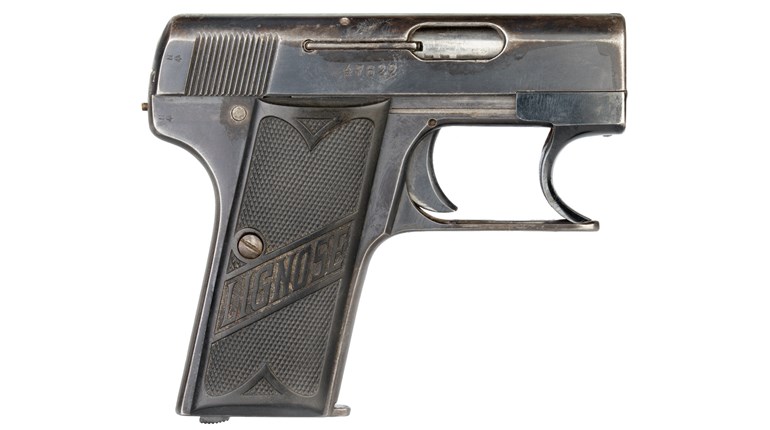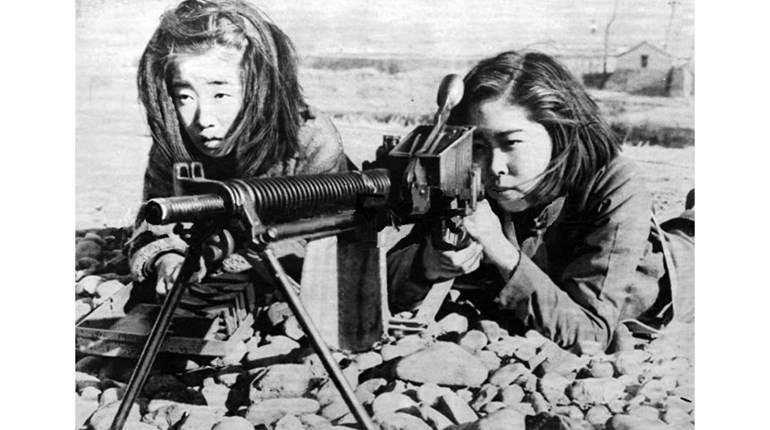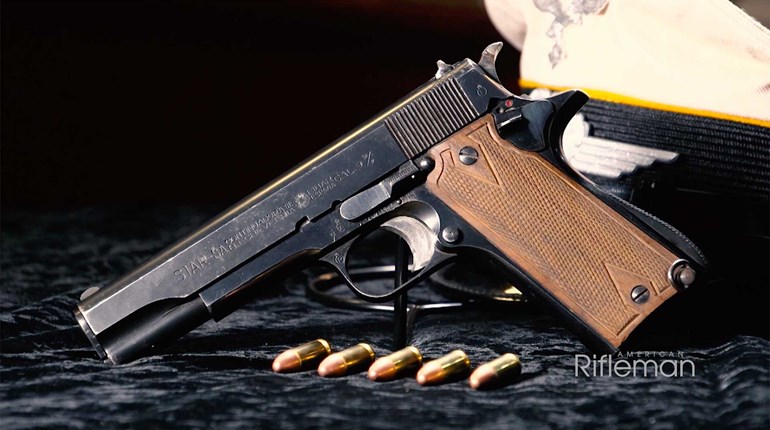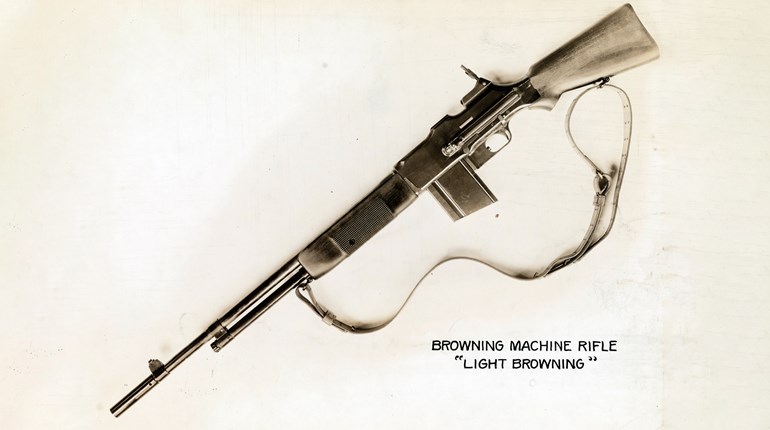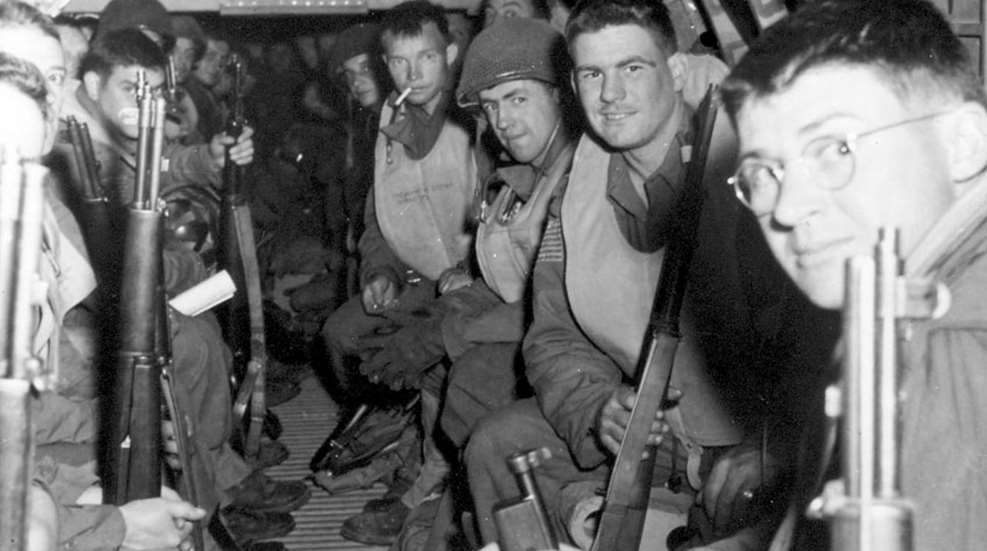
While the gear might look different, the mindset of someone willing to jump out of a "perfectly good airplane" stays pretty constant.
The business of getting soldiers into battle was fairly straightforward prior to the Civil War. Lucky troops rode horses, but for the most part a soldier’s legs did the moving and their hands did the rifle carrying. The introduction of rail travel meant for the first time troops could ride at least part of the way to the big show. The 20th century added trucks just in time for World War I, but even with these prime movers in play, warfighters still used their feet to travel the last few miles to the fight.
The use of troop-carrying aircraft during World War II made placing infantryman directly on top of—or behind—an enemy force possible thanks to the simultaneous development of static-line parachuting techniques. While massed airborne assaults took care of the manpower problem, paratroopers needed something other than their hands to carry their individual weapons into battle. Hurling one’s body out of an aircraft and into free space requires your hands to be free to perform a series of tasks that should not include holding onto a rifle. German Fallschirmjägers carried handguns and submachine guns (SMGs) strapped to their bodies when they jumped over Crete in May, 1941. Their rifles and larger guns floated down in separate containers under their own parachutes. That turned out to be a bad idea and one that Allied forces went to school on during later combat jumps.
The evening hours of June 5th, 1944 found more than 13,000 U.S. paratroopers of the 101st and 82nd Airborne Divisions “chuting up” for the airborne assault onto Normandy the following morning. Their objective was to prevent German troops from getting through to reinforce the coastal defenses arrayed against our main Allied amphibious landings. All hoped that the invasion of France would speed the death of the National Socialist party’s “Thousand Year Reich.” In true paratrooper fashion, these soldiers were going in behind the lines, ahead of the main attack and with little support beyond the men to their left and right.
A variety of thoughts go through a paratrooper’s mind prior to a combat jump. They think about sweethearts, families and home in general. They try to focus on their ground missions. They wonder about the weather during and after the jump. They reflect on their faiths and the possibility of entering into eternity within a few short hours. They worry about anti-aircraft fire and whether the pilots will get them to the correct drop zones (DZs).
The airborne and glider-borne forces filling the June 6th skies over Normandy were comprised of veterans from previous campaigns—a few with combat jumps under their belts—and many soldiers who were about to receive the ultimate baptism of fire. Most of the paratroopers had only made a few training jumps prior to the big event. As they boarded the C-47 transports that would buck and yaw them to their drop zones, their thoughts would likely have drifted to the jump itself. Sky soldiers all have their own pre-jump rituals—prayers, jokes, tightening helmets and straps, mentally rehearsing the jump sequence, dozing off, re-tightening straps, fussing over ammo bandoliers, overfilled rucksacks, jump knives and anything else strapped to their bodies. Their individual weapons are another concern altogether. The science of jumping individual and crew-served guns into combat was not exactly settled on prior to that pivotal summer morning.
Reports and pictures of D-Day jump preparations indicate that a variety of weapon-rigging techniques were employed. The main rifle carried by U.S. paratroopers was the M1 Garand, but unit leaders and specialty troops often carried M1 Carbines, Thompsons and M3 “Grease Gun” SMG variants. Bazookas and Browning Automatic Rifles were also part of the package. While I can guarantee the men who jumped with those big guns were anything but comfortable in the air, I am equally certain they were extremely popular on the ground.
At this point in the war various weapons containers, such as the “Griswold Bag,” were in use. These pouches helped limit damage to both jumpers and guns during hard landings or collisions. Unfortunately, the Garand had to be broken down into its two main pieces in order to fit in its pouch. Some pictures show entire “chalks” with Griswold bags, but many more photos show paratroopers carrying their rifles loosely during and after loading their C-47s. Some jumpers rigged their weapons “exposed”—slung muzzle-down and secured within harness straps. Others appear to have routed minimal rigging around their rifles. The idea was to be able to quickly deploy the thing most likely to keep them alive once they hit the ground, which is a need I understand wholeheartedly.
One sleeting December evening 45 years after D-Day found me rigging up for the combat-parachute assault that was to help kick off Operation Just Cause in Panama. That is a story for another time and venue, but the rifle-transport aspect is relevant here. Although our equipment was vastly improved over that of our World War II forebears, the weapon-rigging situation had scarcely evolved. Most of us secured our rifles and light machineguns in the aptly named M-1950 weapon container. This canvas case’s main improvement over the Griswold-type bags was that individual rifles no longer had to be disassembled and the M-1950 could be lowered along with a jumper’s rucksack to the end of a 15-foot line prior to landing.
At approximately 0210 hours on Dec. 20 1989, USAF C-141 pilots dropped the 82nd Airborne Division’s first four chalks several hundred meters off of the DZ in order to avoid flying over ground fire from Panamanian forces. That put us into scrub trees and thigh-deep water. I landed next to my equipment, so I quickly extracted my M16A2/M203 and loaded both weapons. The M-1950 did its job, allowing me to be ready within seconds so I could head to the airfield and do some infantry things.
U.S. paratroopers and special-operations forces have made many more combat parachute assaults since Operation Overlord 75 years ago. In addition to later World War II jumps, the wars in Korea and Vietnam, the invasions of Grenada and Panama and combat zones in the War on Terror have all seen the use of airborne troops. Tactics, aircraft and equipment have changed, but the end goal is still to place fighting troops on the ground where the enemy does not expect them. Incidentally, the M-1950 was finally replaced around 2013 by the Modular Airborne Weapons Case for use in static-line operations. That is a good thing, because what has not changed is the need for each paratrooper to get their rifle into operation as quickly as possible once they reach the ground.












